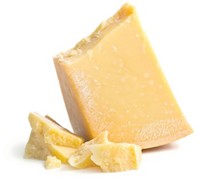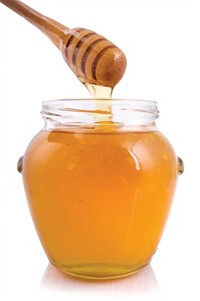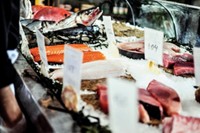Advertisement
Grab your lab coat. Let's get started
Welcome!
Welcome!
Create an account below to get 6 C&EN articles per month, receive newsletters and more - all free.
It seems this is your first time logging in online. Please enter the following information to continue.
As an ACS member you automatically get access to this site. All we need is few more details to create your reading experience.
Not you? Sign in with a different account.
Not you? Sign in with a different account.
ERROR 1
ERROR 1
ERROR 2
ERROR 2
ERROR 2
ERROR 2
ERROR 2
Password and Confirm password must match.
If you have an ACS member number, please enter it here so we can link this account to your membership. (optional)
ERROR 2
ACS values your privacy. By submitting your information, you are gaining access to C&EN and subscribing to our weekly newsletter. We use the information you provide to make your reading experience better, and we will never sell your data to third party members.
Instrumentation
How analytical chemists are taking on food fraudsters
Scientists are getting smarter at identifying substitute ingredients, contaminants, and allergens
by Alex Scott
July 24, 2022
| A version of this story appeared in
Volume 100, Issue 26

Does this food bar contain insect protein? Is this classic wine a fake? Has this honey been diluted with syrup? Could I be eating “meat glue”? Increasingly, the answer to such questions is yes, according to analytical chemists working in food analysis.
Global population growth puts more strain on food production and provides greater incentive for fraudulent activity such as replacing food ingredients with cheaper alternatives, according to Markus Fischer, a chemistry professor and director of the Institute of Food Chemistry at the University of Hamburg.
Fischer and other analytical chemists are trying to be smarter at finding fraudulent foodstuffs by identifying food “fingerprints” more rapidly and at reduced cost. In addition to looking for fake foods that masquerade as authentic, they are seeking out contaminants such as microplastics, toxins from fungi, and unapproved ingredients. More-sensitive instruments and advances in data analytics are helping scientists stay a step ahead of fraudsters.
Fischer was one of many analytical chemists working in the field of food fraud and safety drawn to Munich in June to attend Analytica, an event showcasing lab equipment and analytical chemistry techniques for fields including food, pharmaceuticals, and environmental services. This year’s Analytica, the first since the start of the pandemic, was buzzing with about 26,000 visitors. Many of the 891 exhibitors now see food analysis as a substantial and growing part of their business.
Analyzing food authenticity using proteomics is a $17 billion-a-year market that is growing by more than 15% annually, according to Georgios Theodoridis, a professor at Aristotle University of Thessaloniki. The Greek government is so concerned about foods around the world masquerading as authentic Greek products that, under Theodoridis’s direction, it has started systematically reviewing Greek foods and creating a database of distinct biomarkers of authentic foods so they can be readily differentiated from fakes.
“The database will also be used to determine the health claims of the producers,” said Theodoridis, speaking at an Analytica symposium. The focus is on local foodstuffs, including wines, olive oil, honey, feta cheese, and an aniseed-flavored liqueur called ouzo.
Theodoridis typically uses proteomics to characterize food products and create a biomarker fingerprint. He relies on a variety of analytical techniques, including inductively coupled plasma mass spectrometry, for identifying trace levels of elements in biological fluids. Another part of his armory is high-resolution mass spectrometry for measuring the composition of a food at a high level of accuracy. He also uses nuclear magnetic resonance spectroscopy.

For centuries, wines from the Greek island of Santorini have been celebrated for their high acidity and full-bodied flavor resulting from the island’s dry climate and volcanic soils. “Santorini is a special wine, but ensuring its authenticity is a problem. We can use NMR to determine the real wine,” by measuring the presence of compounds that form as it ages, Theodoridis said.
Because of Theodoridis’s research, the European Union is considering rolling out a biomarker database for identifying authentic foods. It could be used to protect Europe’s small farmers and artisanal food businesses from mass-produced goods such as those made in the US or Australia, Theodoridis said. He is also investigating microplastics and other forms of pollution entering foods. “Industrial waste is an upcoming problem in Europe,” he said.
According to Fischer, food fraudsters typically identify expensive items, such as regional cheeses or wines, and substitute them with cheaper, falsely labeled alternatives. Discerning German consumers, for example, are seeking premium products on the basis of taste, origin, environmental footprint, or health benefits. “But they may not always be eating what they think they are,” Fischer said.
He described the three basic levels of analysis he uses to determine a food’s authenticity. The first level is DNA sequencing, which enables the biological identification of a species or species variety, such as a type of corn. The next level is proteomics, in which a food’s protein spectrum is analyzed.
At the third level, metabolomic techniques can examine a large number of small molecules. “With the metabolomic analysis, you are closest to the phenotype, which is important if you want to get information about geographical origin,” Fischer explained in an interview. For metabolomics, he calls on liquid chromatography/mass spectrometry (LC/MS) or NMR spectroscopy.
To locate the source of a food down to an individual farm—or even a field—Fischer also uses isotopolomic techniques. In this approach, elemental profiles are recorded. In some cases, it can be useful to measure the ratio of carbon-12 to carbon-13 in a food, he said.
In the past, Fischer said, with classic analysis you could examine only the individual components you were looking for. Thanks to ongoing improvements in instrumentation and methodologies—especially fingerprint approaches—analytical chemists have been able to widen the lens and discover problems such as the presence of previously unknown contaminants.
For this nontargeted approach, “you need high-resolution mass spectrometers which are capable of a high degree of accuracy,” Fischer said. “The machines are increasingly sensitive.” Key patterns and structures can be extracted from the data using informatic methods. “This makes it possible to detect things that I may not have considered before,” he said.
Fischer and his colleagues have developed a series of food analysis methodologies to make use of high-powered instruments and the much larger data sets they can generate. The field is developing so rapidly that it doesn’t make sense to apply for patents, he said.
While Fischer and others are developing better analysis techniques, food fraudsters are also making advances. “Food safety and food fraud has been complex for decades, but it’s getting more complex,” he said.
Instrument makers such as the Analytica exhibitor Elementar are attempting to cut through this complexity by offering packages that combine instruments and data to analyze specific food types and determine their authenticity.
For example, Elementar’s Biovision Honey package features an LC for separating honey sugars, a high-temperature combustion interface for converting separated sugars into carbon dioxide, a stable isotope-ratio mass spectrometer to analyze elements in the honey, and software to represent a honey’s fingerprint and differentiate it from conventional plant sugars.
“Sugar is cheap as chips,” said Bianca Brennecke, marketing strategy manager at Elementar. “The people performing the fraud are getting smarter. You can even buy honey syrups from Alibaba with isotonic signatures designed to mimic those of honey.” Elementar’s honey analysis package is able to differentiate such fakes, though, by identifying stable isotopes of sugars exclusive to honey, Brennecke said.
Eurofins performs food analysis for customers in its network of labs and also sells analysis kits. “It is a rapidly growing market,” said Marietta Király, a marketing manager at the firm. Increasingly, Eurofins is working with customers on food fraud cases, especially ones involving ingredients that can cause allergic reactions.
Peanut contamination is a common concern for the firm’s food industry customers. Since March, Eurofins has stepped up its analysis of soy lecithin, which is used in products such as chocolate, because lecithin from India has been found to contain traces of peanuts at concentrations that pose a risk to some consumers. The contamination stems from a change in lecithin sourcing due to the war in Ukraine, Eurofins states on its website.
Agilent Technologies estimates that 10% of its sales are to organizations seeking to analyze foods. The instruments the firm provides for food analysis are usually for LC, gas chromatography (GC), LC/MS, and GC/MS. The firm aims to provide its customers with everything from sample preparation to analysis software, said Thomas Glauner, marketing director for Agilent’s high-performance LC (HPLC) instruments.
Agilent also provides analytical methodologies tailored to specific foodstuffs, databases for contaminants such as mycotoxins and pesticides, and biomarker databases for authentic foods, Glauner told C&EN at the company’s busy exhibition stand at Analytica. When determining the authenticity of a product such as honey, Agilent’s system can be trained to recognize a product from a different region and whether it is true to its label, Glauner said.
Edinburgh Instruments, which also exhibited at Analytica, offers another approach with its RM5 Raman microscope. Applications include authenticating whisky to ensure that it actually is from Scotland or has not been diluted with methanol, according to Angela Flack, an applications scientist at the company. In the latter case, a laser fired by the RM5 into a sample generates spectral information that is captured and presented on a graph to show ethanol and methanol as two distinct peaks, Flack said.

As analytical methodologies and informatics improve, researchers are finding patterns in their data that reveal previously hidden food problems. This is happening in the study of mycotoxins, which are produced by fungi in various foods, including milk if a cow is fed contaminated feed.
Aflatoxin, a mycotoxin, is known to cause cancer in humans, and scientists including Sarah De Saeger, director of the Centre of Excellence in Mycotoxicology and Public Health at Ghent University, are starting to find other mycotoxins that could pose health risks. Mycotoxins have the potential to be a threat even in concentrations of parts per trillion, De Saeger said.
Mycotoxins can be identified using LC-MS or enzyme-linked immunosorbent assay (ELISA), she said. Using these techniques, De Saeger and her team have created a database of more than 150 mycotoxins and their metabolites.
In one of her studies, De Saeger is combining data mining with machine learning–based analysis to provide insights into the link between mycotoxins, low-grade gut inflammation, and conditions such as metabolic disorders, food allergies, and gastrointestinal cancers among people in Belgium. De Saeger also has a biomonitoring study underway in Ethiopia, where she is investigating a link between low fetal weight and exposure to mycotoxins in food.
Another potential health threat is the growing illegal and unlabeled use of insect proteins as a low-cost protein substitute in processed foods. “People who are allergic to crustaceans might also react to novel foods, such as insects, which are new on the market,” said Jens Brockmeyer, a professor of analytical food chemistry at the University of Stuttgart, in a presentation at Analytica.
The problem is that insects contain a number of proteins also found in shellfish, Brockmeyer said. Using proteomics to identify which proteins are present, can determine whether a problem ingredient is from a crustacean, insect, or mollusk species, he said.
Brockmeyer is also applying proteomics to determine shellfish authenticity. There are about 30 types of crustaceans, including lobsters and shrimp, but the wide range of prices at which they are sold encourages food fraud, he said. He is developing a method using two MS instruments in tandem to readily find the species.
“The first step is to characterize the proteomes in order to identify potential marker peptides,” Brockmeyer said. To date he has found peptides for 26 species of crustaceans with a single method.
A potentially more sinister area of food fraud that has emerged in recent years involves the industrial use of “meat glue.” Some meat-processing companies use transglutaminase (TG), an enzyme isolated from the bacteria Streptomyces mobaraensis, to bind disparate meat tissues together so that consumers have the impression that they are eating a whole cut, such as a steak, Brockmeyer said.
He is part of a team that published a paper in April detailing an HPLC/MS/MS method for detecting peptide markers that indicate the presence of transglutaminase. It has been adopted as Germany’s official method for identifying TG in foods. In the European Union, to legally sell a product with meat tissues connected with TG, a food producer must label it “formed meat.”
A major challenge for analytical chemists is the tsunami of potentially problematic food ingredients to analyze. “And the more we improve our technologies, the more we see,” said Gertrud Morlock, a professor of food science at Justus Liebig University Giessen, during a talk at Analytica. There are thousands of compounds in food, she said, and for 90% of them, the “signals”—which show whether they are a danger—remain unclear.
“We can’t just ignore them, but on the other hand, we can’t elucidate them all,” Morlock said. “We don’t have enough chemists in the world, to be honest.”
Advertisement
She advocates analyzing just those compounds that have a biological effect. For example, she said, if estrogenic compounds are in foodstuffs, only the bioactive portion of the compounds needs to be investigated. Even this more narrow search can uncover new risks to human health, Morlock added.
There is no doubt that better instruments and more powerful informatic technologies are enabling analytical chemists to do more and better food analysis. But the growing sophistication and scale of the food fraud threat, as well as the discovery of problems long hidden in the food chain, mean food chemists have more on their plates than ever.





Join the conversation
Contact the reporter
Submit a Letter to the Editor for publication
Engage with us on Twitter